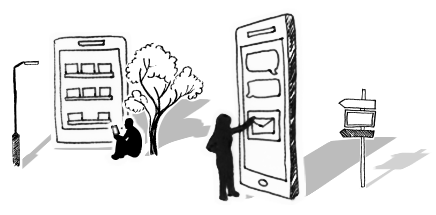




The Importance of a Change Management Toolkit
Whatever type of change you’re implementing, a change management toolkit is essential to enable you and your fellow leaders to plan, communicate and deliver the initiative with clarity and consistency.
Your people need to understand, accept and even be excited for your change in order to embrace and adopt it, and your change management toolkit should provide all the components required to accomplish and accelerate this.
Keep reading to discover why a change management toolkit is so valuable, the essentials every toolkit should contain and how to utilise them. Plus, get a sneak peek of the toolkit in action with a real-world case study.
What Is a Change Management Toolkit and What Are the Benefits?
A change management toolkit is a structured set of resources, templates and strategies designed to facilitate organisational change. It provides a comprehensive, consistent approach for leaders to plan, execute and sustain business change, whether in operations, culture or process.
Building and utilising a tailored toolkit will empower you to:
- Improve efficiency by streamlining change-related tasks through pre-defined assets and frameworks
- Create organisation-wide consistency in your approach to change management
- Reduce resistance to your change by addressing stakeholder concerns with clear communications and engagement
- Ensure your change is fully embedded in your organisation for long-term success and full benefits realisation
- Equip your leaders to deliver future change initiatives more efficiently and effectively
What Are the Components, Types, or Models of a Change Management Toolkit?
There is no standard set of tools your change management toolkit should include – these will vary across the scale and scope of your change. However, it should provide users with tools they can apply across all stages of a change programme. These might include:
Business case template
Provides change leaders with a standard way of articulating the purpose and benefits of their change, with a compelling rationale for stakeholders.
Change readiness assessment
A way of evaluating your organisation’s preparedness to accept and adopt change. Do this yourself in just 5 minutes with our free online change readiness assessment tool.
Change impact assessment
Analyse how your change will affect processes, people and systems. Learn all about change impact assessments here.
Stakeholder analysis
Identify key stakeholder groups and their influence, interests and concerns to inform the curation of personas and tailored communications.
Skills gap analysis
Uncover training requirements so you can equip your people with the skills required for new ways of working.
Communications plan
Define the messaging, channels and timelines for communicating your change effectively.
Artefacts
Branded visual identities, templates, engagement decks, videos and more to support the communication and engagement efforts of users.
Measurement
Proven, data-driven methods for collecting feedback and measuring the success of change initiatives.
Additionally, change management toolkits can be built to span traditional approaches to change, such as ADKAR or Kotter’s 8-Step Model, to fit more agile, iterative change journeys or be tailored to meet specific organisational needs, maximising relevance and effectiveness.
Best Practices for Building and Using a Change Management Toolkit
Creating your change management toolkit is only half the battle; you and the other leaders responsible for driving your change need to be able to effectively apply the tools it contains. In order to do this:
Avoid generic solutions
There is a smattering of PDF toolkits available online, but these lack the specificity needed to address the unique challenges of your organisation and change. Instead, toolkits should be customised to align with your company’s culture, industry and objectives.
Build for long-term success
Your toolkit shouldn’t stop supporting you at the point of go-live. Components should provide ongoing value beyond the life of a change programme to ensure the change can be fully and continually embedded into your organisation’s DNA.
Make it accessible
Host your toolkit digitally on intranets or shared folders to make it interactive, engaging and easy to use. This will also make collaboration simpler and streamline the rollout of your toolkit.
Train your team
Simply sending colleagues the toolkit isn’t sufficient. Ensure they know how to use each component effectively, and the benefits of doing so, as well as how each element fits into the larger change programme lifecycle.
Continuously improve
Use feedback and measurement tools to not only monitor the effectiveness of your change, but your change management toolkit. Refine it accordingly, and keep updating it beyond the life of your change programme. Your change management toolkit should evolve with your organisation, rather than being a static asset.
A Change Management Toolkit Case Study
Project Overview
The Group HR directorate of our rail infrastructure client introduced Systems Thinking to address the challenge of devolution and drive modernisation that put their 46,000 people at the heart. Afiniti were engaged to equip them with a comprehensive change management toolkit for helping stakeholders embrace Systems Thinking to unlock more efficient delivery and performance across the network.
Our Change Management Toolkit Solution
Our toolkit needed to empower local change leaders across target areas to be the voice of Systems Thinking. To achieve this, we created key components including:
- A pitch book that coherently linked the change to strategic goals and desired efficiency.
- An engaging visual identity that stood out among competing change initiatives and enabled stakeholders to form connections to the Systems Thinking story.
- A compelling, easy-to-deliver engagement deck that enabled leaders to bring Systems Thinking to life.
- A clear animation that articulated the narrative of Systems Thinking to make it relevant for both global and local operations.
- User guides, solutions descriptions, user personas and video success stories to equip leaders with a variety of assets to deploy across diverse audiences.
The Value Our Change Management Toolkit Added
- Employee Engagement
As a result of our partnership and the development of a powerful toolkit, the Systems Thinking team were able to engage 72% of leaders and 12,467 colleagues in Systems Thinking within one year, securing its recognition as a way of improving the rail network.
- Increased Efficiency
The new mindset and ways of working ultimately overachieved desired efficiencies, including a 32% increase in planned vs actual hours, 20% more shifts without work lost and a 20% increase in productivity per person.
- Lower Costs
Because employees were equipped with the knowledge and tools to make improvements where they worked, the client was able to achieve multimillion operational cost savings.
- Change Embedded
Systems Thinking is now fully embedded within the client as their new ethos of operational transformation, maximising the effectiveness of frontline colleagues with greater efficiency and safety, optimised processes and significant cost savings, all owned and delivered by client teams.
A well-designed change management toolkit can accelerate and derisk your next change programme, but it must be comprehensive and tailored to your organisation and people to be truly effective.
For more advice and guidance about your change management toolkit, or any of the suggested components we’ve listed above, please feel free to get in touch with our expert team.
To get the latest change tips, advice and guidance directly to your inbox, sign up to our monthly Business Change Digest.
